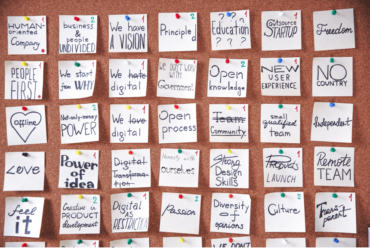In his blockbuster 1997 book The Four Agreements, author Don Miguel Ruiz introduced four simple but powerful principles to help all people live with more personal freedom and inner peace. Honor these agreements and life will be sweet. If only business meetings of all manner and size were that simple …
Ruiz’ book sold more than 15 million copies in the U.S. and stayed on The New York Times Best-Seller list for more than a decade. In summary, it says the key to harmony and happiness is to:
- Be impeccable with your word by speaking truthfully and kindly.
- Take nothing personally because others’ actions reflect themselves, not you.
- Make no assumptions. Instead, communicate clearly to avoid misunderstandings.
- Always, always do your best, understanding that your best may vary day to day but doing so fosters self-respect and growth.
While cynics may roll their eyes and call this an oversimplification, I ask, “Is it?” Maybe happiness in life is that simple. And taking this thought process a bit further, maybe the key to more engaging, collaborative and productive business meetings – whether they occur on a handful of screens across a vast Zoom or Teams network, or with hundreds of folks gathered in a large conference hall – is the application of these very same principles.
A Different “Take”
An interesting perspective popped into my LinkedIn feed recently. Thomas Lahnthaler, who calls himself an “intentional unconventionalist,” posted that he’s against ground rules or agreements in group settings. His take? They only help the facilitator, not the people in the room. Agree with him or not, his perspective pushes one to pause for a moment and rethink things. I did and I came to the conclusion that I simply don’t agree with his statement. [Call me an “intentional conventionalist”, I guess.]
Where I
think he misses the mark, despite a litany of people cheering his post on, is
that it’s often the spoken or implied rules and guidelines — the “agreements” —
that keep people between the navigational beacons and lessens the likelihood of
some flying off-topic or off-task. There’s a reason why interstates are lined
by directional signs, posted speed-limits, and overhead readerboards. Without
these, especially in today’s often frantic, too-quick-to-confront society, our
highways would devolve into demolition derbys in no time. With all due respect
to Mr. Lahnthaler, it’s these very “agreements” that lead to successful
business sessions. Let’s take a closer look …
Start with “Why Are We Here?”
I know it sounds as obvious as pumpkin spice this time of year but leaders, presenters and facilitators of business sessions should always kick off any group work by answering the obvious but often disregarded questions:
- Why are we meeting?
- What do we hope to accomplish?
- How much time do we have to do it?
Establishing an “end game” up-front helps people use their time well and actually gain something from being together. How can that happen unless we’re clear – every single person — on expectations? It also helps to know who will be there, what issues are already on their minds, and what outcomes matter most to them. Oftentimes, people come from different backgrounds and don’t yet realize certain agreements exist. That’s when you get pushback, frustration, or flat-out resistance. Setting those boundaries [“agreements”], stating them, and creating a common platform or environment that works for everyone is not just useful, it’s essential.
The Invisible Agreements We All Carry
Think about it: Normal, everyday conversation relies on unspoken agreements. We just don’t consciously think about them or state them up-front when we chat with a spouse, a friend, a co-worker, or a neighbor. It’s understood — we all use a common language, we’re typically polite, listening is a give-and-take, and if the other party opens up, we’re more likely to do the same. All this is wrapped in respect. But when assumptions don’t line up, things can go downhill quickly.
Now scale that up to a whole group, and suddenly you’re knee-deep in misunderstandings, biases and close-mindedness that could have easily been avoided. And that’s precisely why establishing these agreements up-front is so important. It’s not about rules to restrain people, it’s about creating an environment in which all may contribute and, more importantly, benefit.
What Agreements Actually Do
Agreements don’t instantly make everyone safe or comfortable. But they do make it far more likely that people will speak up and participate, and stay on-topic and on-task. For the more timid, it reassures them they won’t be shut down and their voice will matter just as much as the more verbose players who will hijack sessions if given a hint of an opening. It also means people are more likely to wait their turn to speak and not talk over other each other, keeping the session from slip-siding into the ugliness of a Congressional hearing. I’ve seen meetings turn around dramatically with just one or two solid agreements stated up front. Something simple like, “Let’s hear first from people who haven’t spoken yet” can change the whole vibe of a conversation.
Why It Ultimately Matters
After several decades in the business, I still find people are inclined to invest a lot more time, energy and concern up-front on logistical matters before ever getting around to the goals, objectives, substance and the agreements for each session. Yes, securing the right venue in the right city on the right dates, easy airlift, food & beverage, etc. are all important but so, too, is the structure, tone, content and guidelines for each session.
Is it time to take a new look at how your next program should be designed and executed, with one eye focused on logistical priorities early in the process, while the other is also focused on messaging, style, structure and session “agreements”? When both are prioritized early in the planning process, the likelihood of success skyrockets.
If you find yourself struggling with this, or you simply want to brainstorm a new and effective way to execute your next program, give us a call. We’d love to help you out.
Cheers,
Kenneth Jones






